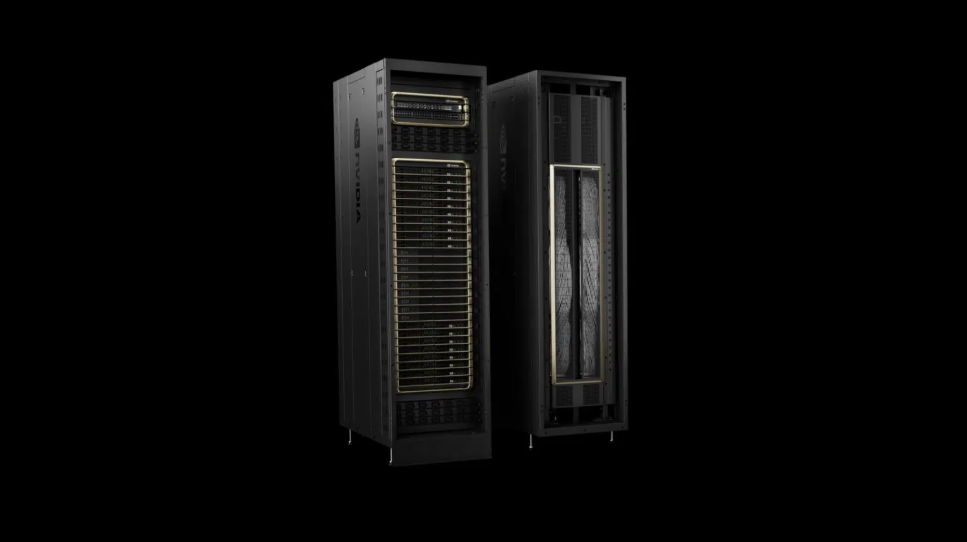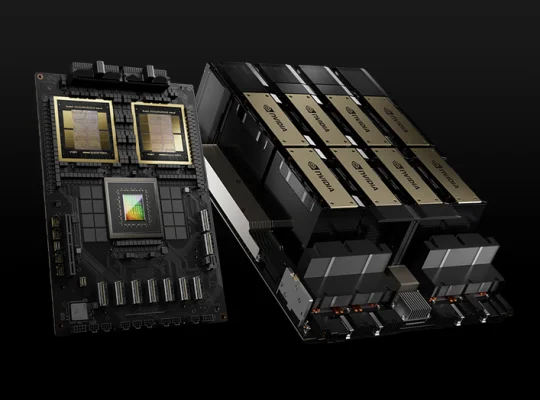Nvidia Blackwell GPUs: Supercharging Deep Learning and AI Performance
Nvidia’s Blackwell GPU architecture represents a monumental leap forward in the world of Artificial Intelligence and deep learning. Engineered from the ground up to tackle the increasing demands of generative AI and large language models (LLMs), Blackwell GPUs offer unprecedented performance, efficiency, and scalability for the most complex AI workloads.
Here’s how Blackwell GPUs are fundamentally improving deep learning and AI performance:
1. Revolutionary Compute Power with Fifth-Generation Tensor Cores
At the heart of Blackwell’s performance gains are itsfifth-generation Tensor Cores. These specialized processing units are purpose-built for AI and deep learning, delivering a massive increase in raw compute power compared to previous generations.
New Precision Formats (FP4, MXFP4, MXFP6): Blackwell introduces native hardware support for ultra-low precision formats like FP4 (4-bit floating point) and community-defined MXFP4/MXFP6. This allows for significantly higher throughput and reduced memory footprint during both AI training and inference, especially for massive models.
Maintained Accuracy: Nvidia employs sophisticated “micro-tensor scaling” techniques to ensure that even with these lower precision formats, the accuracy of the AI models remains high, a critical factor for reliable real-world deployment.
Sparsity Acceleration: Blackwell’s Tensor Cores efficiently handle sparse tensor operations, a common characteristic of large transformer models, effectively doubling performance in sparsity-intensive workloads.
2. Second-Generation Transformer Engine
Large Language Models (LLMs) are defined by their transformer architectures, and Blackwell’ssecond-generation Transformer Engine is specifically designed to accelerate these models.
Dynamic Precision Adaptation: This engine dynamically adapts computational processes to the specific workload requirements of LLMs, optimizing performance for both training and inference.
Faster Training and Inference: Combined with innovations in Nvidia’s software stack like TensorRT-LLM and NeMo Framework, the Transformer Engine dramatically speeds up the training convergence and real-time inference of even trillion-parameter models. Benchmarks show up to a 15x higher inference throughput for models like GPT-MoE-1.8T compared to the previous generation.
3. Massive Memory Capacity and Bandwidth (HBM3e)
AI models are becoming increasingly large, demanding vast amounts of memory and high bandwidth to feed data to the processing cores efficiently.
Expanded HBM3e Memory: Blackwell GPUs feature significantly more High Bandwidth Memory (HBM3e) capacity (e.g., 192GB on the B200), more than doubling the effective VRAM of its predecessor (H100). This allows a single Blackwell GPU to hold much larger models or batch sizes, reducing the need for complex multi-GPU sharding.
Blazing Fast Memory Bandwidth: With up to 8 TB/s of memory bandwidth, Blackwell alleviates memory bottlenecks that often hinder the performance of memory-intensive AI workloads, such as those involving large sparse models or recommender embeddings.
4. Unprecedented Scalability with Fifth-Generation NVLink
Training and deploying the largest AI models often require thousands of GPUs working in concert. Blackwell’s interconnect technologies enable unparalleled scalability.
Fifth-Generation NVLink: This advanced interconnect doubles the GPU-to-GPU communication speed to 1.8 TB/s, significantly improving the efficiency of multi-GPU training by reducing communication overhead.
NVLink Switch: The NVIDIA NVLink Switch chip allows for the creation of massive, unified GPU systems. A single NVL72 domain, for example, can connect up to 72 Blackwell GPUs, behaving as one giant GPU with a unified memory space and coordinated workload distribution. This enables more efficient distributed training and inference, supporting models scaling up to 10 trillion parameters.
5. Enhanced Reliability, Availability, and Serviceability (RAS)
For mission-critical AI deployments, system uptime and reliability are paramount. Blackwell includes a dedicatedRAS Engine to ensure intelligent resiliency.
Predictive Maintenance: The RAS Engine continuously monitors thousands of data points across hardware and software to predict and intercept potential faults, minimizing downtime and increasing system availability.
Optimized Operations: This built-in diagnostic capability helps quickly localize the source of issues, facilitating effective remediation and reducing operational costs for large-scale AI deployments.
6. Energy Efficiency and Cost Reduction
Blackwell GPUs are designed not just for performance, but also for remarkable energy efficiency, leading to significant cost savings.
Reduced Power Consumption: Through architectural innovations and optimized precision formats, Blackwell can deliver the same AI performance with significantly less energy consumption per inference, making it ideal for large-scale deployments and sustainable AI.
Fewer GPUs for Same Workload: The immense performance boost means that fewer Blackwell GPUs are required to train and run large models compared to previous generations, leading to reduced infrastructure costs and a smaller data center footprint.
Real-World Impact and Benchmarks
Recent MLPerf benchmarks underscore Blackwell’s transformative impact. For instance, on the challenging Llama 3.1 405B pretraining benchmark, Blackwell delivered 2.2x greater performance compared to the previous-generation architecture at the same scale. For LLM fine-tuning, an 8-GPU Blackwell system achieved 2.5x more performance than an equivalent Hopper system.
Nvidia’s Blackwell GPUs are more than just a performance upgrade; they are a foundational architecture designed to meet the escalating demands of the AI era, accelerating scientific discovery, powering next-generation generative AI, and enabling industries to deploy intelligence at an unprecedented scale.














